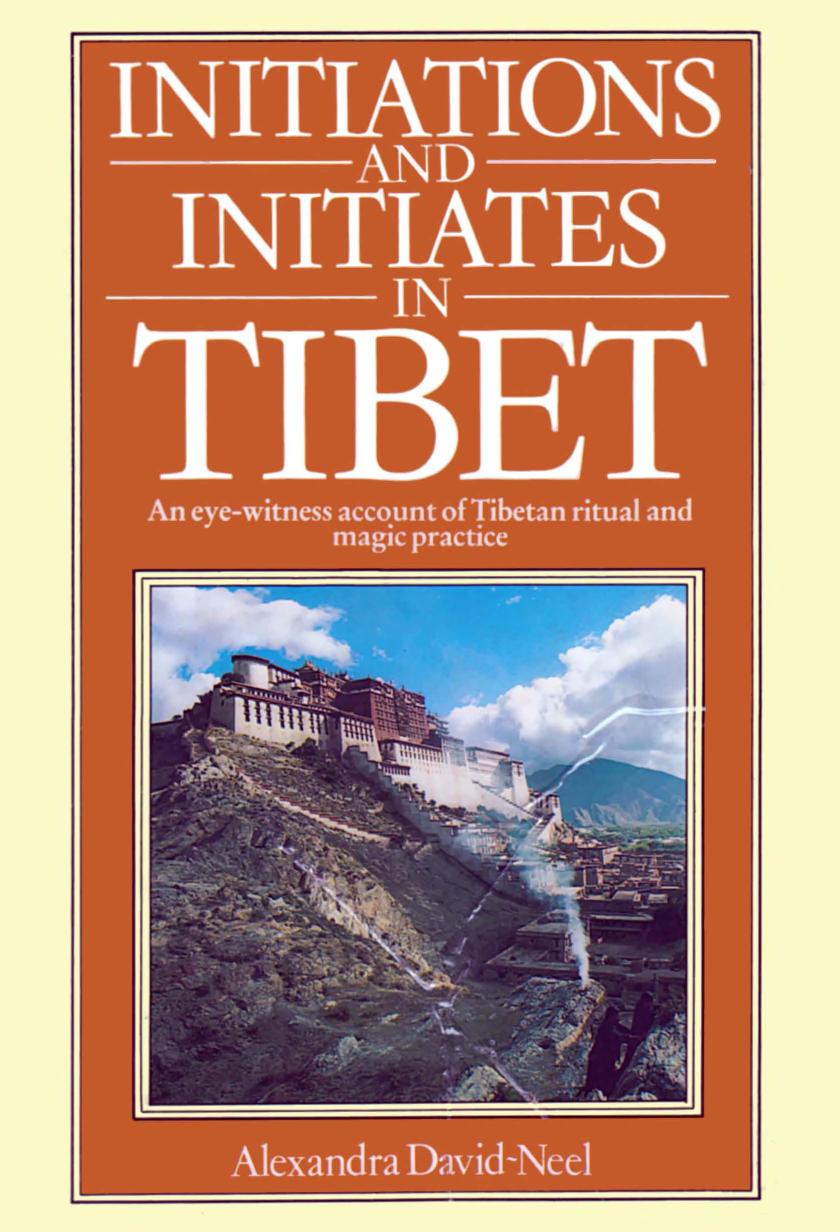Initiations and Initiates in Tibet by Alexandra David-Neel

Author:Alexandra David-Neel [David-Neel, Alexandra]
Language: deu
Format: epub, azw3, pdf
Published: 0101-01-01T00:00:00+00:00
6
THE LESSER AND THE GREATER VEHICLE
HiNYANA and Mahayana are familiar terms to those who have read works on Buddhism; it would therefore appear superfluous to explain them. Nevertheless, as the meaning given to them by the Buddhists, especially by the initiate Lamaists, diverges widely from that current in the West, it is fitting to deal with it at this stage.
In the language of the Orientalists, the expressions htnayana (in Tibetan, theg men) and mahayana (in Tibetan, thegpa chenpo), apply to a division of Buddhism into the primitive doctrine and more recent doctrines, presenting either developments or a corruption of the ancient teaching.
It is not my purpose to expound the philosophical conceptions that characterise the two "vehicles". Moreover, this division of the Buddhist world into two clearly distinct factions is wholly theoretical and but slightly conformable with the facts of the case.
In the first place, the name hinayana, "lower vehicle", formerly given by the orthodox to their opponents, is not accepted by them. The Sinhalese, the Burmese, the Siamese, and all the Buddhists whom foreigners include among the htnayanists, do not consider themselves-and quite rightly-as inferior to their co-religionists in China, Japan, and Tibet in matters touching Buddhist philosophy. On the contrary, they declare that they are in possession of the only authentic doctrine, that of the Theras: the Ancients.
The Buddhists in the lands ofN orthern Asia, whom foreigners call mahayanists without distinction, are more discreet, as a rule, in accepting the title.
Here I will deal only with the Tibetans, more particularly with the masters of mysticism who teach a dam nag and confer esoteric and mystic initiations.
It has been said that the expression "great vehicle" indicates a doctrine more acceptable to the majority than that of the Ancients and which is more capable of bearing multitudes of the faithful to salvation.
This interpretation-which indeed I have not found to be current in Asia-is unknown to the Lamaists. In their opinion, the mahayana must be understood as a "great" vehicle, in the sense of being superior, lofty.
If they are told that the elaboration of the mahayana doctrines must be attributed to Asvagosha, to Nagarjuna or some other Buddhist philosopher, they strongly protest against this opinion.
Their reply is that these masters taught doctrines belonging to the "great vehicle" but they did not invent it. This "great vehicle" has existed from all time; it consists of various lofty teachings which vulgar minds cannot understand. It follows that, according to the Lamaists, instead of being a spacious vehicle, easy of access to the masses, the mahayana is rather a very distant vehicle accessible only to the elite.
The Lamaist mystics do not regard the whole of their canonical Scriptures as belonging entirely to the mahayana.
They include in the lower vehicle works dealing with precepts of ordinary morality, the rules of monastic discipline and everything in any way connected therewith.
Salvation, they never cease repeating, is a purely spiritual matter; it is the possession of "knowledge", the liberation (tharpa or tolwa)1 from delusion, and all these precepts and rules contribute thereto only as a preparatory training which refines the mind.
Download
Initiations and Initiates in Tibet by Alexandra David-Neel.azw3
Initiations and Initiates in Tibet by Alexandra David-Neel.pdf
This site does not store any files on its server. We only index and link to content provided by other sites. Please contact the content providers to delete copyright contents if any and email us, we'll remove relevant links or contents immediately.
| Africa | Americas |
| Arctic & Antarctica | Asia |
| Australia & Oceania | Europe |
| Middle East | Russia |
| United States | World |
| Ancient Civilizations | Military |
| Historical Study & Educational Resources |
The Sympathizer by Viet Thanh Nguyen(4336)
The Rape of Nanking by Iris Chang(4165)
World without end by Ken Follett(3445)
Ants Among Elephants by Sujatha Gidla(3439)
Blood and Sand by Alex Von Tunzelmann(3164)
Japanese Design by Patricia J. Graham(3136)
The Queen of Nothing by Holly Black(2539)
City of Djinns: a year in Delhi by William Dalrymple(2530)
Foreign Devils on the Silk Road: The Search for the Lost Treasures of Central Asia by Peter Hopkirk(2442)
India's Ancient Past by R.S. Sharma(2432)
Inglorious Empire by Shashi Tharoor(2410)
Tokyo by Rob Goss(2403)
In Order to Live: A North Korean Girl's Journey to Freedom by Yeonmi Park(2357)
Tokyo Geek's Guide: Manga, Anime, Gaming, Cosplay, Toys, Idols & More - The Ultimate Guide to Japan's Otaku Culture by Simone Gianni(2344)
India's biggest cover-up by Dhar Anuj(2333)
The Great Game: On Secret Service in High Asia by Peter Hopkirk(2313)
Goodbye Madame Butterfly(2223)
Batik by Rudolf Smend(2151)
Living Silence in Burma by Christina Fink(2047)
